Greater White-fronted Goose
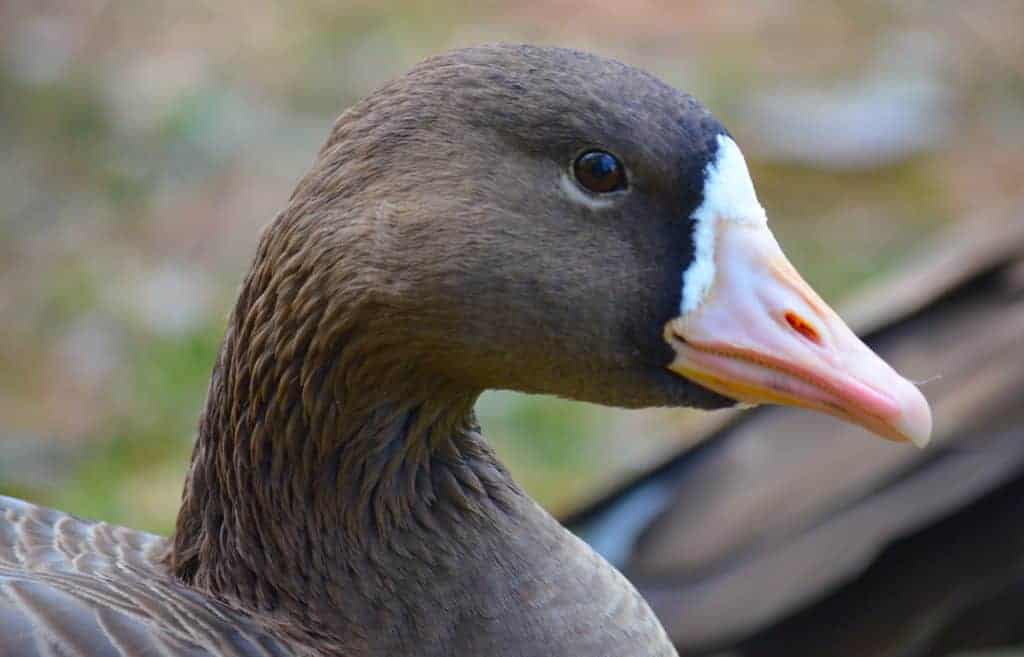
There are five subspecies of Greater White-fronted Goose recognised:
- Greenland A. a. flavirostris — Slightly larger, and obviously darker than nominate, the only ssp. with which it overlaps in Britain. Breeds western Greenland; winters north and west Britain.
- European A. a. albifrons — Medium-sized grey-brown goose with white forehead and black belly bars. Breeds Siberian tundra; winters north-west, central and south-east Europe to south-west Asia, Pakistan, northern India and China.
- Elgas’s A. a. elgasi — Slightly larger than gambelli and with longer bill. Breeds southern Alaska; winters Sacramento Valley, CA.
- Gambell’s A. a. gambelli — Larger and darker ssp. than nominate. Breeds north-west Canada and adj. Alaska; winters south-west USA and Mexico.
- Bride’s A. a. sponsa — of south-west Alaska; winters California and western Mexico.
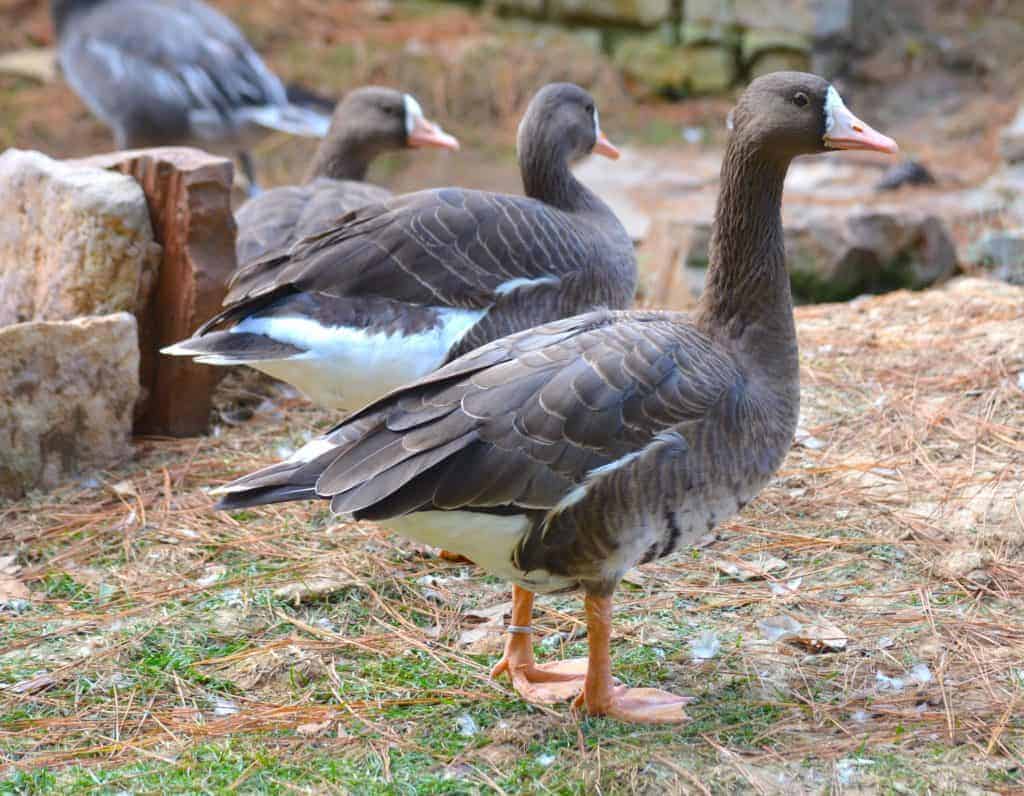
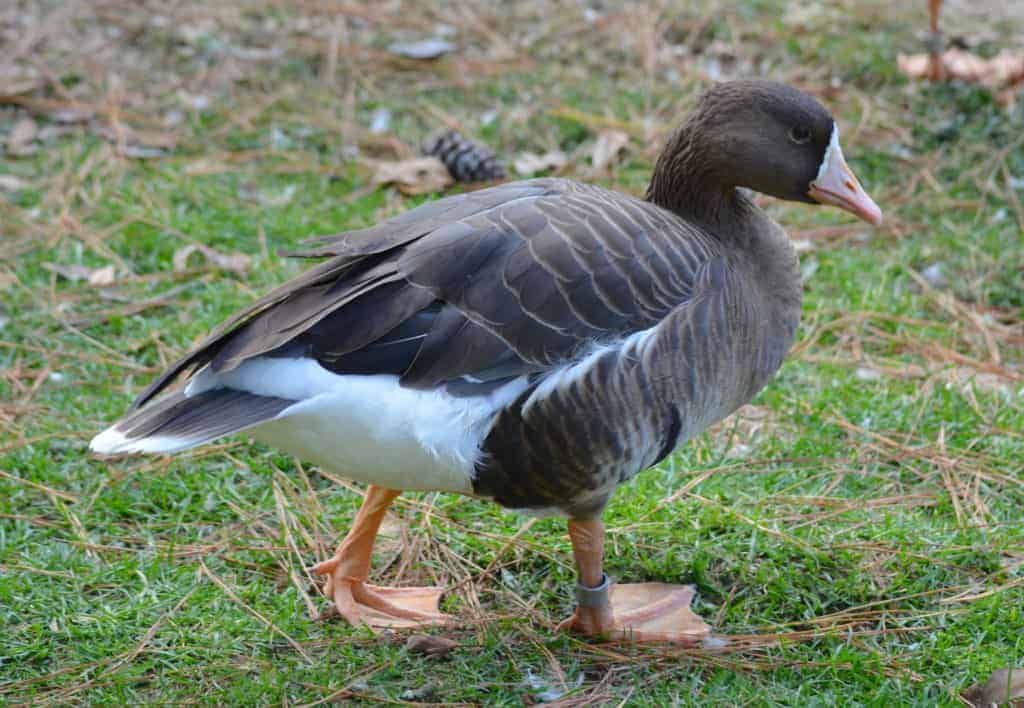
Anser albifrons
The most widely distributed of all the grey geese, the Greater White-fronted Goose breeds on the taiga and tundra of Siberia, Alaska, Canada and Greenland. Over 100,000 winter in Europe, but none breed closer to Britain than arctic Russia. In recent decades the number of Russian birds wintering in the British Isles has fallen sharply, with milder winters allowing birds to remain in the Netherlands rather than crossing to England.
The distinctive Greenland White-fronted Goose winters exclusively in the north and west of the British Isles. This subspecies is Red-listed in Britain, being globally threatened. The ultimate causes of a collapse in its productivity remains poorly understood, but probably relates to changing spring weather conditions and competition with Canada Geese Branta canadensis on the breeding areas — probably acting in combination.
An overall 60% decline in the species’ UK population size over 25 years moved it directly from the Green to the Red list for the first time in Britain in 2015.
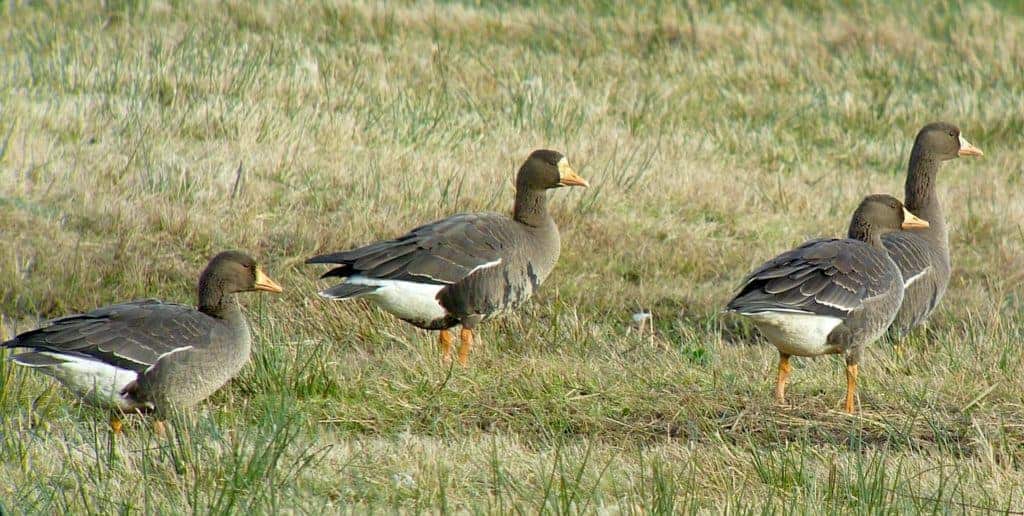
Several other races are also recognised, including gambelli which breeds in north-west Canada and winters in the southern USA and Mexico.
These geese breed readily in captivity, and tend to be both sociable and peaceful given sufficient space. They are usually mature at three years old. More attractive than Greylag Geese and the bean geese, they are common in collections, though the much daintier (and rarer) Lesser White-fronted Goose is the preferred choice of many keepers. These closely-related species will hybridise readily, so unpaired birds of opposite sexes should be kept apart.
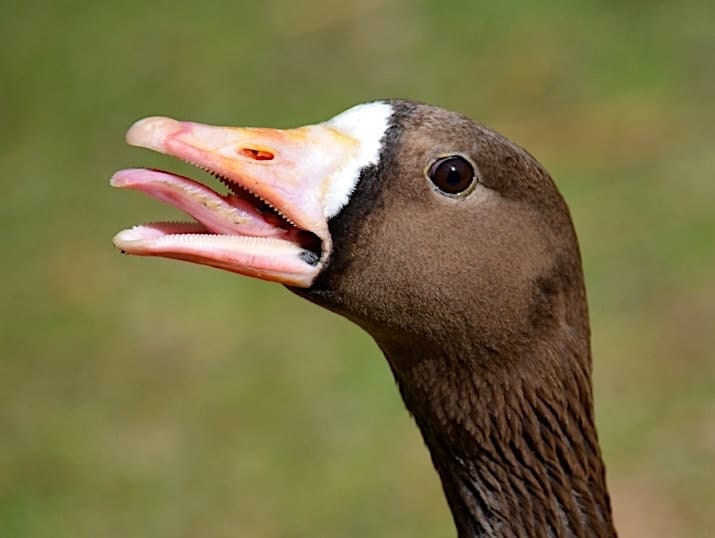
A stocky, orange-legged goose, it is easily identified by its distinctive white face patch and the distinctive black bars on the belly, though only adults have these features. They are noisy birds, with cackling calls higher pitched and more musical than those of Greylag Geese and less shrill than those of Pink-footed Geese.
Greater White-fronted Geese make a shallow ground nest of vegetation, sparsely lined with down and feathers. 3–7 creamy or pinkish pale buff eggs are incubated for 22 to 28 days. The goose does all the sitting, but the gander stands guard. Newly hatched goslings are defended by both parents and the family group stays together until the following breeding season.
With such a large incubation window, it is worth consulting the supplier of your birds what the incubation period was for your individuals.
FURTHER READING
Hollmen, T, 2021. Marine Bird Sensitivity to Hydrocarbons. Alaska Sea life Center.
Ottenburghs, J., van Hooft, P., van Wieren, S.E. et al. 2006. Hybridization in geese: a review.
Share this page